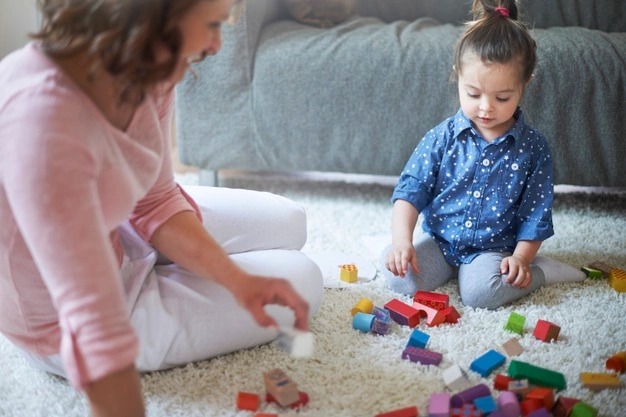1. Make it a family thing
The best way to learn is in an environment where everybody is learning. Even if you might already know Arabic, make it fun and involve not just yourself but the entire family.
Place post-it notes on things around the house, from plates to tables, on the window, toys, and the dog,, picking up a note and reading the word out loud will still be helpful for you.
Try and challenge yourself by picking up an object and wondering what it is called in Arabic. When your young one comes up with the correct word, one that you did not know (or pretended not to), it will help cement that word in their mind.
2. Read books
No matter what your age, get some picture books that are aimed at young Arabic kids learning to read. In those you will have simple words denoting everyday objects, often in themed settings, and you can read them together. Learning a language is as much about learning to speak as it is learning to spell.
Learning Arabic by reading
Join the local library to not only access a wide variety of books in Arabic but also to enjoy the reading corners, where other Arabic learners are also be sitting immersed in stories. Also, inquire whether the library has storytelling hours. At first, it will be daunting to not understand a single word of what is being said, and you might not want to go again However, gentle persuasion and choosing a reading of a story they already know, or going through the story at home beforehand will help.
3. Get fun activity magazines
Saudi Arabia has a wide variety of magazines for all age groups, many featuring animals, others filled with mostly comics. You’ll find many different themes, from joining the Kindergarten to going to the playground. They are full of pictures, puzzles, posters, and simple stories designed for learning to read.
There are other Arabic magazines focusing on whatever you might be particularly interested in, from horses to dogs and dinosaurs. They will leaf through, look at the pictures, and pick up the odd word.
4. Watch TV
This is one time when watching TV should be encouraged. In Saudi Arabia, at least on the main channels such as Al Jazeera, Peace TV, Huda TV, Iqra TV, kids’ TV is limited and often educational.
5. Play games together
Board games not only bring the family together but can also be a good tool to learn another language.
There are simple games for the younger crowd:
Ludo (Mensch ärgere Dich nicht), where you can practice counting as you move your piece along;
Memory, i.e. matching pairs of pictures, where you add for your kids the challenge of calling the object out in Arabic.
More Components of easy learning
There is three essential components to learning the Arabic language in an easy way:
- Motivation
- Persistence
- Method
The best way to learn
There are some tips that will work wonders:
- Begin your Arabic training with the best language learning app or enroll yourself in an online class.
-Language learning apps are now guaranteed shortcuts to speak Arabic fast.
- Use flashcards for the Arabic words that can’t seem to stick.
-flashcards will do the trick. Put down on sticky notes the most stubborn words and make sure you’ll see them every day.
- Train your ears with TV series, movies, music, or short videos in Arabic.
-Watching Arabic movies, TV series, short videos, or listening to Arabic music will increase your concentration on learning Arabic.
- Talk to yourself in Arabic.
-If you can’t find any online friends to help you practice Arabic, you can even talk to yourself. Not by yourself, but to yourself.
6. Practice & Repeat
Have a personalized notebook especially used for learning Arabic which your child can constantly refer to for revision. Let them choose the notebook and decorate it any way they want – to make it special. You can even use it to have your child draw whatever you say in Arabic. Go back over the pictures every few days. It will help them link new words to images. Doing this will help train their brain to think in Arabic instead of searching for translations in their head.
Other than that, Do all of the above on repeat!
Repeat, repeat, repeat. Practice, practice, practice.
In short, Love the language to Live the language!





